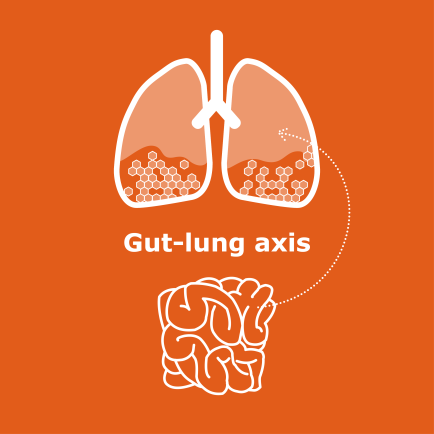Increased Risk of Idiopathic Pulmonary Fibrosis in Inflammatory Bowel Disease

Inflammatory bowel disease (IBD) increases the risk of developing idiopathic pulmonary fibrosis (IPF), particularly in male patients with Crohn’s disease, a large-scale population study shows.
The study, “Increased Risk of Idiopathic Pulmonary Fibrosis in Inflammatory Bowel Disease: A Nationwide Study,” was published in the Journal of Gastroenterology and Hepatology.
IBD is a general term that encompasses several chronic inflammatory disorders of the digestive tract, the two main types of which are Crohn’s disease and ulcerative colitis.
Crohn’s is characterized by inflammation of the digestive tract lining, while ulcerative colitis causes long-lasting inflammation (ulcers) in the large intestine (colon) and rectum.
IBD can also cause problems in organs outside the digestive system, called extraintestinal manifestations. Some IBD patients with active disease develop conditions that affect the joints, eyes, or skin, while others experience a wide range of lung conditions including chronic bronchitis, pulmonary vasculitis, eosinophilic pneumonia, and IPF.
There have been case reports suggesting an association between IBD and IPF, but the relationship remains unclear. To date, large-scale population-based evidence to determine a link between these two conditions has not been evaluated.
A Korean research team to conducted a large retrospective study to evaluate the incidence and risk of IPF among people with IBD compared with the general population.
Using medical data collected from the National Health Insurance (NHI) service in Korea, they extracted medical information, demographic information, medical history, and data on comorbidities (coexisting conditions). They compared a total of 38,921 IBD patients, including both new IBD cases (incident) and existing IBD cases (prevalent), with 116,763 age- and sex-matched individuals without IBD.
Crohn’s disease accounted for 32.5% of the study population (a total of 12,647 patients), while 26,274 patients (67.5%) had ulcerative colitis. Approximately 61% of the patients were male, and the average age of the study group was 40 years.
After almost five years of follow-up, 63 patients (0.16%) with IBD developed IPF compared with 119 patients (0.10%) without IBD who developed IPF, representing a 1.62 times increased risk of IPF in people with IBD.
The team found that the number of IPF cases, per 100,000 person-years, was 28.87 in the incident IBD group and 33.21 in the prevalent IBD group, compared with 20.86 in the control group. In particular, IPF incidence was increased among patients with Crohn’s disease, with 27.3 IPF cases in the incident IBD group and 26.04 cases in the prevalent IBD group, compared with 9.15 in the control group, representing a 2.93 and 2.89 times higher IPF risk, respectively.
In patients with ulcerative colitis, however, the increased risk was less pronounced and not statistically significant; 29.65 (incident) and 36.66 (prevalent) IPF cases compared with 26.54 in the control group.
An analysis of demographic subgroups revealed a significantly higher IPF risk among male Crohn’s patients, particularly those younger than 40 years old as well as those without comorbidities such as diabetes, hypertension, and dyslipidemia (abnormal amount of blood lipids).
In patients with ulcerative colitis, no statistical difference was found among these demographic subgroups except for males and those without comorbidities. In addition, those treated with steroids showed an increased risk for IPF, while those treated with the approved therapy mesalamine (sold under several brand names) had a lower risk of IPF.
“Patients with IBD, especially Crohn’s disease, had a significantly higher risk of IPF compared to the general population in this nationwide population based study,” the researchers wrote. “Patients with IBD should be aware of the potential risk for the development of IPF.”
Adapted from pulmonaryfibrosisnews.com